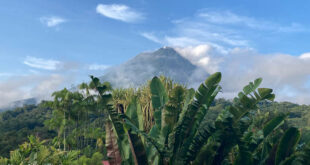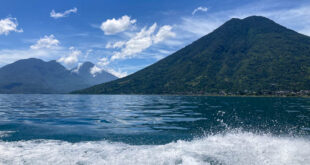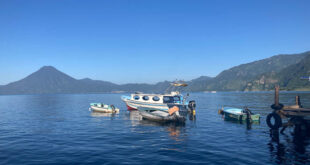If like us you speak only basic Spanish, the prospect of the Penas Blancas border crossing can be a little daunting. It can be confusing trying to understand exactly what is happening and what you should do. This step-by-step guide to crossing the border from Nicaragua to Costa Rica explains exactly what happens and key things you need to be aware of. That way, you can sit back and enjoy the journey.
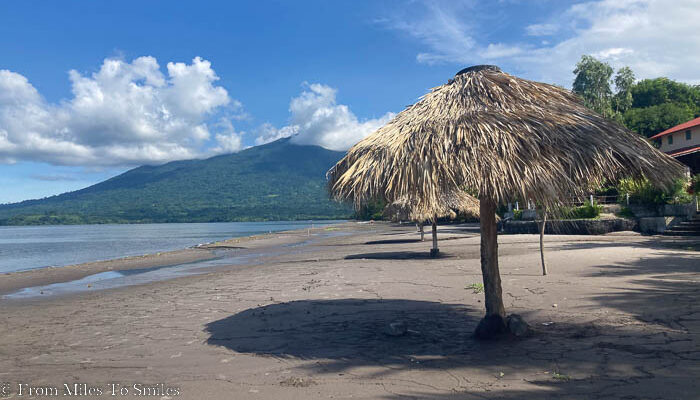
Tica Bus travel
The only bus company that does the entire route on one bus seems to be Ticabus (please let us know if you managed to find any other company). Our Ticabus from Granada was basic with no wifi or seat back TVs, however the bus from Rivas was pure luxury. It had seatback TVs, USB ports supposedly (although I could not find one) and functioning (albeit not well) wifi.
Step one – buy your tickets
The Managua to San Jose Ticabus route starts in Managua then picks up in Granada and Rivas before it heads to the border. When you book tickets online the website is really confusing. You first have to select the full route and then indicate where you wish to start and end your journey. The initial filter is the route rather than your boarding point.
You can buy tickets directly through Tica Bus but we found the Marvelus site easier to use because of the aforementioned confusion.

Step two – head to your pick up location
Managua Tica Bus pick up
We only took buses from Granada and Rivas. In Managua the departure point for the Ticabus is near to the shopping center Plaza Inter and Hotel Crowne Plaza Managua. You can find the exact departure point here.
Granada Tica Bus pick up
In Granada, the bus picks up outside the Ticabus office next to the old hospital on Calle Elena Arellano. You need to arrive 30-45 minutes in advance as you will need to check in and get your luggage tags. These tickets are split into two halves. One half attaches to your hold luggage and you keep the other half as proof of ownership. When you reach your final destination, you need your half to retrieve your bag.
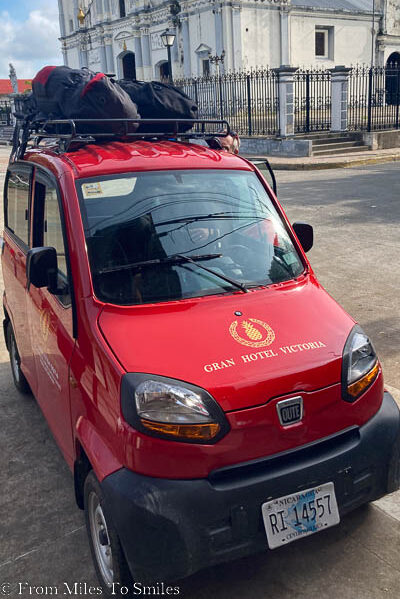
Rivas Tica Bus pick up
In Rivas, the pick up is at the bus stop opposite Maxi Pali on NIC-2. It is not easy to establish the pick up point unless you already took a bus that dropped you at this location. We could not find anything to indicate it was the Ticabus stop but any taxi driver will know where to drop you for the Costa Rica bus. Failing that, it is essentially a bus stop directly opposite Maxi Pali so if you wait there you will not miss the boat.
In Rivas, you do not need to arrive as early as there is no office to check into. We left Rivas on the bus which departed Managua at 6 and arrived in Rivas around 8.30. I would recommend no later than 815 for the 830 pick up as the bus does not hang around and can be early. The bus driver will give you the baggage tags and indicate where to place your bags in the hold.
Nicaraguan exit form
As you board the bus, the driver hands you the Nicaragua exit form to complete for your party. You can complete this during the journey to the border but do not dally. It is only 35km from Rivas to the border and a member of staff takes it off you before the border. We never saw this piece of paper again and have no idea what happened to it.
Incidentally, I recommend travelling earlier rather than later (there is a bus an hour later). By the time we had cleared Costa Rican entry requirements the line for immigration was three times as long.
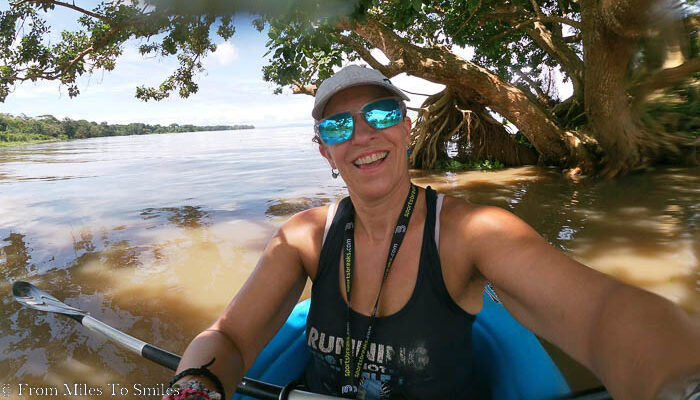
Step three – exit the Nicaraguan border
The first stop is about 40 minutes into the journey at the bathrooms (cost C$ 20 each) and is also your last chance to spend any remaining C$ at the row of souvenir stalls. As you descend from the bus you will be accosted by a swarm of people who want to sell you Sim cards, drinks and other items. There is also a gaggle of people who will change your cash from C$.
Note, there is no need to get off the bus here as there are bathrooms to the right of the entrance to the Nicaraguan migration building. Unless you are desperate, I recommend that you wait the ten minutes or so until you get to the immigration building. That way, you do not need to pay for the bathroom.
Nicaraguan immigration
The Nicaraguan immigration building looks new and modern in a bright whitewashed building. Unlike the ramshackle corrugated hut that is the immigration building at Potosi, this is efficient and orderly. You must take all your bags with you to pass through customs and foreigners have to pay US $1 to enter the building. You can also pay this in Cordobas at $C36 (correct at the time of writing).
At the immigration desk, you have to pay a further US $3 exit fee which CANNOT be paid in Cordoba. Contrary to reports I heard about staff refusing to give change, we received change from a US $20 note with no argument.
As an aside, if you use US$ in Nicaragua, any change will be in Cordoba so it is difficult to come by small USD notes.
Once you have paid your fee, the official stamps your passport and sends you on your way with a receipt.
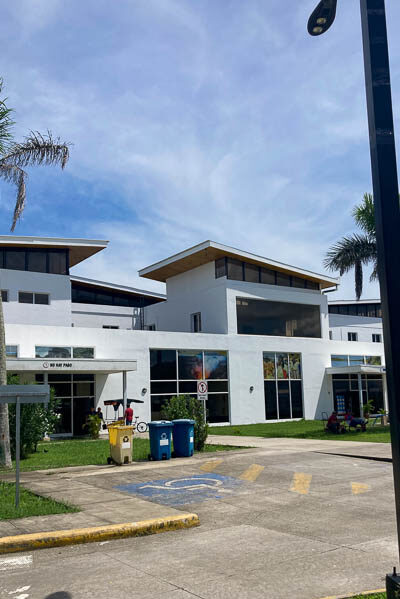
Luggage checks
Unlike in Potosi, the building has x-ray machines and luggage checks are quick and efficient. Amazingly we make it through the Nicaraguan border in less than an hour.
Step four – enter no man’s land
The bus moves to the other side of the Nicaraguan immigration building while you complete formalities. When you exit the Nicaraguan baggage check area, you are officially in no man’s land, as is your Ticabus. When you head out of the exit you will see it waiting for you. Pop your bags back in the hold and board the bus.
Once everyone is back on board, the bus drives the short distance (500m approximately) through no man’s land to the rather less modern immigration building where you complete the formalities for entry to Costa Rica. Donald Trump may have wasted a lot of hot air talking about building a wall but Nicaragua and Costa Rica have a pretty impressive series of walls separating the two countries as you pass through no man’s land!
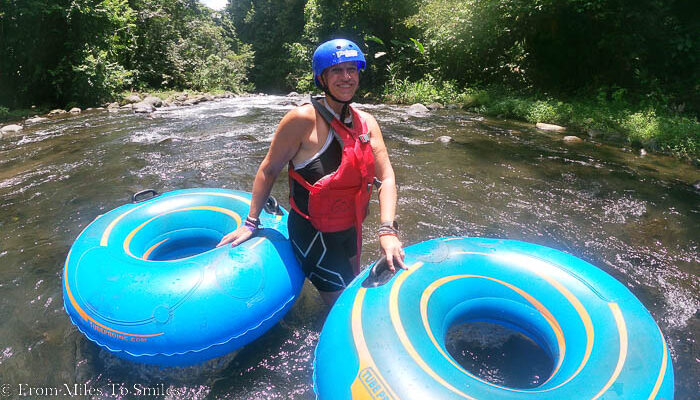
Step five – Costa Rica entry requirements
Costa Rica Immigration
When your bus pulls up outside Costa Rican immigration, you must disembark and take all your bags with you through immigration.
Note, do NOT enter the first queue as you enter the building. There are maybe 6 desks in the immigration hall so head to any but the first. This is because there seems to be a priority system whereby the elderly or people with children queue jump but only to the first desk as you enter! It can be pretty annoying and causes some consternation for waiting passengers. Steer clear of this line and you can avoid this!
I am not going to emphasize this enough. You MUST check entry requirements thoroughly before travelling. On both our inbound and outbound Nicaraguan border experiences, other passengers highlighted the perils of not doing sufficient research.
Perils of not doing your research
At Potosi, one couple failed to have money for the entry fee which must be paid in US $. Customs officials lack any semblance of concern for unprepared arrivals and refuse to accept payment by card. Our fellow passengers had to borrow from other passengers. Another group failed to bring the relevant passport copies required by Nicaraguan authorities on entry to the country. Customs officials showed equally little tolerance for this and hence a motorbike was despatched with their passports and a few dollars to make the required passport copies in a nearby village. Frankly the thought of sending my passport off with a stranger would terrify me!
At the Costa Rica border one couple almost missed the onward bus due to a lack of awareness of Costa Rican immigration requirements, namely the need to show proof of departure from Costa Rica.
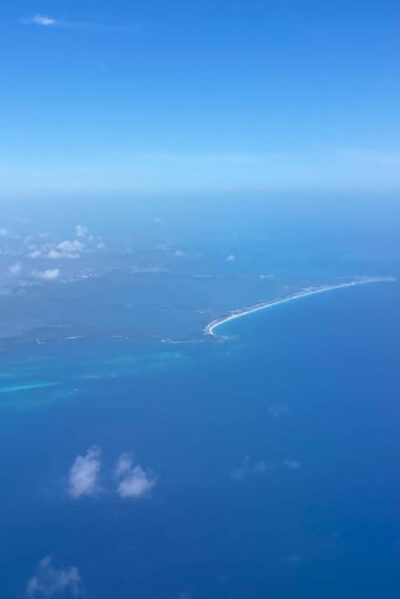
Costa Rican immigration requirements
For clarity, at the time of writing (August 2023) there is no need to show any Covid vaccination proof to enter Costa Rica, nor is it required to have any PCR testing.
However, you need to be able to tell immigration officials the following (and provide proof if asked);
- your immediate destination in Costa Rica
- where you will be staying at that destination
- when and how you will leave Costa Rica
Proof of onward travel
If you have yet to book onward travel, it pays to attempt to find an international bus ticket that you can cancel free of charge. This is often not possible as most tickets are non-refundable. The other option is to commit to your departure date before your arrival. The couple above were refused entry until they purchased an international bus ticket! It also meant they almost missed the onward connection in Costa Rica and I suspect their blood pressure was somewhat elevated.
Luggage check
Once you have your Costa Rican stamp (note there is no entry form to complete for Costa Rica) take your bags and put them through the x-ray machines. Then you can exit the building.
You are no longer an illegal immigrant and have officially entered Costa Rica.
Costa Rica border facilities
There is an ATM at the immigration office. There are also free bathrooms and stalls selling drinks and refreshments.
Costa Rican currency
Note once you are in Costa Rica, the currency switches from Nicaraguan Cordoba to Costa Rican colon. Whilst there is about 47 Cordoba to the £ there are about 680 Colons. Don’t get these currencies mixed up unless you wish to be seriously out of pocket.
Although, you can use dollars in many places in both countries, the exchange rate is unlikely to be favourable so I recommend you travel with plenty of local currency. Credit cards are widely accepted in Costa Rica but less so in Nicaragua.
Or you could use the Currensea card which is one of our favourite modes of payment when travelling.
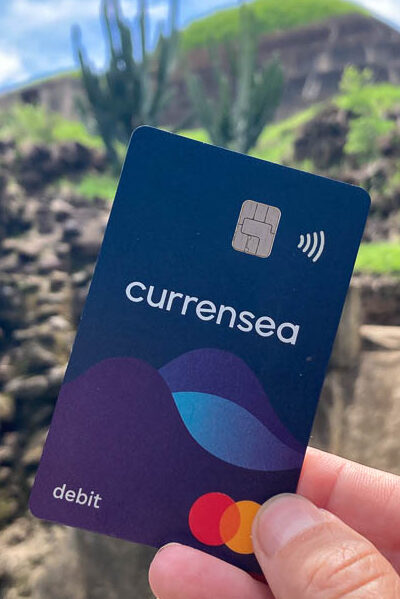
Step six – reboard the bus
You now take all your luggage back to the bus and tell the driver your final destination. He puts the bag in the relevant compartment for that destination.
Step seven – arrive at your onward destination
We disembarked in Liberia which is the first stop after the border, only 90 minutes away at most. The stop is under the highway in the middle of the road. If you need to stay overnight in Liberia and do not wish to travel far Hotel Boyeros is ideal as it is literally across the road.
However, this hotel cost £78 for our stay on the 27th August and is absolutely not worth it. Although there is access to a pool and garden, both are in desperate need of some serious maintenance. Whilst the rooms are a decent size, it is a little like a decaying communist hotel that would have been luxurious in the 1970s but now is a dated and lacking some TLC.
Resources for immigration requirements
Note, the Foreign Office have an excellent resource that highlights entry requirements for every country around the world. This is a must check resource before you travel to Costa Rica or any other country.
The US government offers something similar so I assume this will be the case for travellers from most countries. You can access the US and UK sites here.
UK website – entry requirements for Costa Rica
US website – advice for travel to Costa Rica
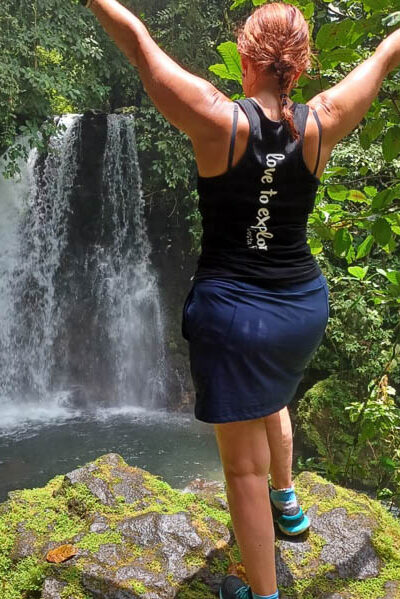
Round up
The total time for our journey from Rivas to Liberia was 4 hours. Of that, we spent two hours passing through the borders but it felt pretty painless compared to our Potosi crossing. Whilst I read a number of blogs that proved really useful before we travelled, I would have liked a step by step breakdown of each stage like this one. I hope therefore that this step by step guide to crossing the Penas Blancas border helps you have a relaxing and enjoyable journey.
 From Miles to Smiles Stylish travel for professionals seeking luxury at affordable prices
From Miles to Smiles Stylish travel for professionals seeking luxury at affordable prices
